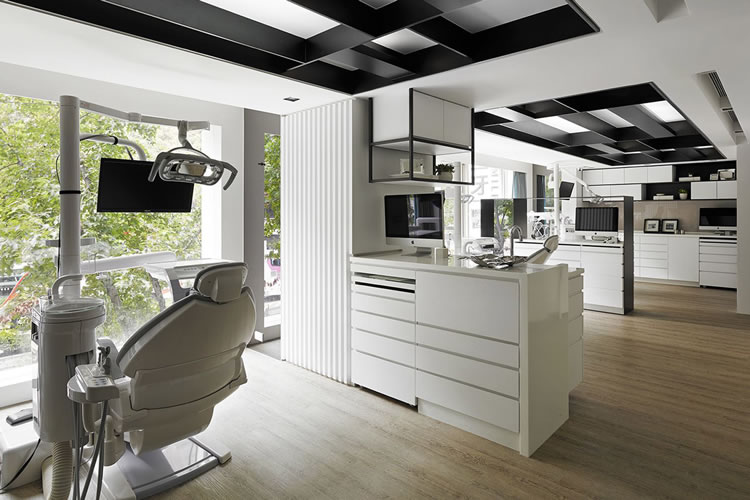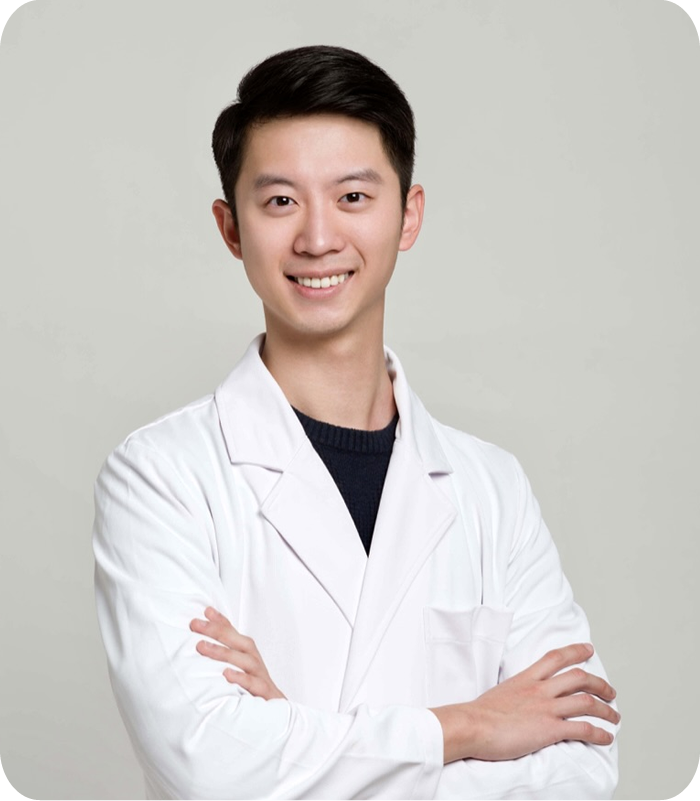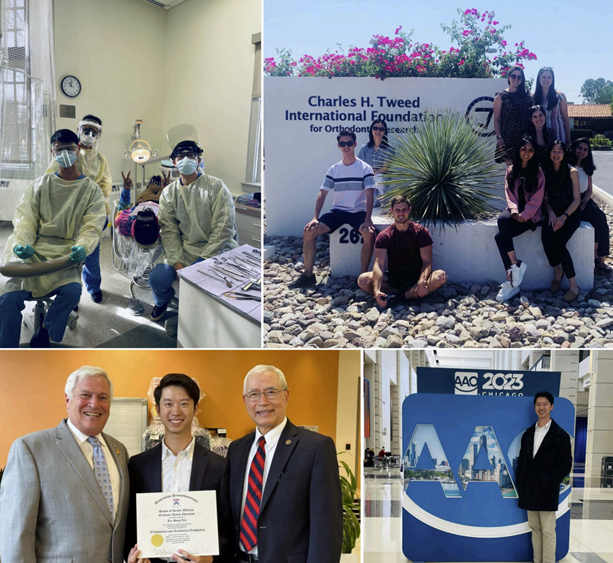首頁 > English
Dr. Jia-Hong Alex Lin DDS, MS Orthodontist
- diplomate, American board of orthodontics
- University of Pennsylvania School of Dental Medicine Master of Science (Orthodontics) Orthodontic Residency
- National Taiwan University Doctor of Dental Surgery
- American Association of Orthodontists

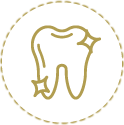 Dr. Alex Lin | Invisalign | Braces
Ivy League Trained,US Board Certified Orthodontist,English Speaking Dentist
Dr. Alex Lin | Invisalign | Braces
Ivy League Trained,US Board Certified Orthodontist,English Speaking Dentist
Being one of the few US-trained and board-certified orthodontists in Taiwan, Dr. Lin is a proud alumnus from the University of Pennsylvania where he completed his orthodontic residency and a Master’s degree in Oral Biology. Prior to that, he went to National Taiwan University for dental school and graduated 1st in his class. While at UPenn, Dr. Lin published several articles in the prestigious American Journal of Orthodontics and Dentofacial Orthopedics, including a research on miniscrews with Dr. Chris Chang and another on early orthodontic treatment for kids with the Penn team. The latter was awarded Research of the Year by the American Association of Orthodontists. During residency, Dr. Lin also specializes in orthodontic-related periodontal surgeries, including procedures to prevent gum recession after braces, bone grafts to accelerate tooth movement, and exposing impacted teeth. Apart from research, his greatest passion in orthodontics lies in incorporating the latest technology into patient care, including artificial intelligence and clear aligners. These state-of-the-art technology advancements allow Dr. Lin to take care of his patients with greater precision and better results. You can check out hisAI- supported orthodontic simulation here. Born in Cambridge, England and having spent some of his elementary school days in Singapore, Dr. Lin loves traveling and is always excited to try new cuisine, although deep in his heart he still thinks nothing beats Taiwan’s beef noodle and pineapple cake! Dr. Lin now practices in Taipei City and is a member of the American Association of Orthodontists. If you’re looking for an English-speaking, US-trained orthodontist for braces or Invisalign in Taiwan, give us a call and schedule an appointment!

FAQ
-
What’s the difference between an Orthodontist and a Dentist?
Orthodontists are dental specialists who undergo an additional three years of training after completing dental school and specialize in the alignment of teeth using braces or aligners. Orthodontists also work with dentists of other specialties in order to provide the best care possible to our patients.
-
What's so special about being a US Board Certified Orthodontist?
The American Board of Orthodontics (ABO) Certification is a credential that represents an orthodontist’s personal and public commitment to the standards of specialty practice and lifelong learning. Orthodontic residency is extremely difficult to get in and only about half of all orthodontists in the US are Board Certified. There are only 10 ABO Certified Orthodontists in Taiwan.
-
Why Choose a US board-certified orthodontist?
Dr. Lin is one of the very few doctors in Taiwan who were accepted for orthodontic residency training in the US. As a certified orthodontist by the American Board of Orthodontics, Dr. Lin specializes in Early treatment for children (kids with crowded baby teeth) Adolescent treatment (palatal expansion or other growth guidance) Adult interdisciplinary orthodontic treatment (combined periodontal procedures) Clear aligner therapy (Invisalign or Spark aligners) Obstructive sleep apnea Dr. Lin also co-authored several articles published in journals including theAmerican Journal of Orthodontics and Dentofacial Orthopedics regarding miniscrews, canine impaction, early treatment for children, surgical palatal expansion, etc.
-
Should I choose braces or aligners (e.g. Invisalign)?
Braces are metal brackets that come with either colored o-rings or sliding doors (e.g. Damon system). They work by guiding teeth into better position though wire shape memory, elastic power chains, rubber bands, and other force systems. Braces have been used extensively by orthodontists for more than a century and are super efficient in moving teeth. Aligners, the most popular brands being Invisalign and Spark, are clear plastic trays shaped to fit over teeth. They look like night guards and should be worn 20-22 hours per day. Since aligners are almost invisible, patients wearing aligners can straighten their teeth without drawing attention from friends. Aligners also make oral hygiene maintenance easier as they can be removed for brushing and flossing. They also typically offer more flexibility in appointment scheduling compared to braces. However, doctors may recommend one option over the other based on factors like oral hygiene considerations, patient commitment levels, or specific case requirements. It’s important to have a detailed discussion with your doctor to determine the best treatment approach for your needs.
-
I heard getting braces requires taking out some of my teeth. Is it really necessary?
Orthodontists are generally reluctant to remove teeth, but it’s sometimes necessary as part of their treatment strategy. Orthodontists straighten teeth by moving them into “spaces” . These spaces are often created through expansion of the arch, recontouring of teeth contacts, or moving teeth backward (distalization). However, if these approaches do not sufficient space, orthodontists will consider taking out the bicuspids (premolars) or other teeth. Patients with severe crowding or a protrusive profile will most likely need extraction for straighter teeth and improved facial aesthetics.
-
Some of my friends have miniscrews along with braces. What's that?
Miniscrews, also known as temporary anchorage devices (TADs), have revolutionized orthodontic treatment by enabling faster tooth movement and addressing cases that were once considered only manageable with jaw surgery. This approach is minimally invasive and generally painless for patients. The miniscrews are inserted into the gum and are removed once orthodontic treatment is complete. Maintenance involves brushing the gum around the miniscrew to keep it clean. For further details, you can refer to Dr. Lin’s article, selected as the Research of the Month in the American Journal of Orthodontics.

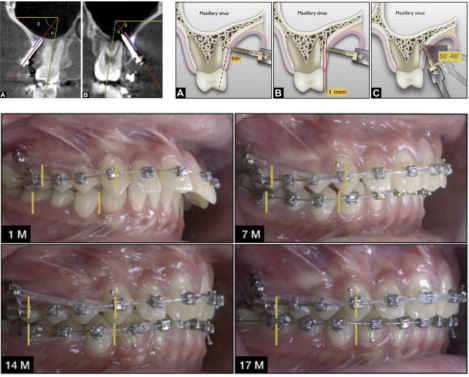 American Journal of Orthodontics Research Article of the Month
American Journal of Orthodontics Research Article of the Month
-
When should my kid start braces?
Orthodontists usually put braces or aligners on adult teeth, not baby teeth. However, many children need early treatment due to the following reasons. Narrow palate The palate consists of two bones known as the left and right maxillary bones. During adolescence, these bones merge to form the roof of the mouth. Children with a narrow palate typically exhibit a V-shaped maxillary arch and a narrow nasal base. This condition can lead to challenges such as nasal breathing difficulties, heightened allergy risks when combined with enlarged tonsils, mouth breathing tendencies, a shortened chin appearance, an open bite, and dental crossbites. Early intervention for a narrow palate involves using an expander to widen the arch while the bone is still in the growth phase. This treatment approach aims to address these issues effectively, promoting proper nasal breathing, reducing allergy-related concerns, and enhancing overall dental and facial harmony. Underbite Underbite is a condition where your lower teeth stick out further than your upper teeth. It could either be a result of underdevelopment at your upper jaw or overdevelopment of the lower jaw. Kids with underbite should be monitored regularly, especially if early intervention or future surgery is indicated. Buck teeth / Overbite Protruding front teeth not only affect the aesthetics of your smile but also increase the risk of trauma if they are hit. Additionally, when coupled with a deep bite, the gum behind these front teeth may be susceptible to injury. For patients with protruding front teeth, a limited phase I orthodontic treatment is recommended to retract the front teeth and improve their alignment. This early intervention can enhance both the appearance and function of the teeth, reducing the risk of injury and promoting a healthier smile. Diastema/Gap Many children often inquire about the gap between their front teeth when visiting orthodontists. In most cases, immediate treatment is not necessary as the gap typically closes naturally once the surrounding teeth fully erupt. However, it’s crucial to remain vigilant for supernumerary teeth, which are extra teeth that may become stuck between the front teeth and contribute to this gap. If supernumerary teeth are present, prompt removal is recommended to prevent further spacing issues and ensure proper dental alignment. Early detection and intervention can help address these concerns effectively. Impacted teeth Not all teeth can erupt into the mouth naturally. Kids with crowding issues or who lost some of their baby teeth prematurely may encounter impaction of their adult teeth. Due to shifting of other teeth, these tooth buds are unable to find space for eruption and are trapped inside the bone. If left untreated, they may encroach upon neighboring teeth and result in resorption of their roots. An attempt to bring the impacted tooth down early is crucial (See Dr. Lin’s article below).

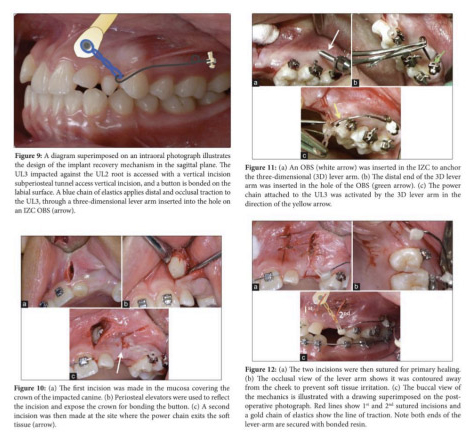 Asian Pacific Orthodontic Society Trends in Orthodontics
Serial extraction
For kids with severely crowded teeth, or when future extraction of adult teeth is already anticipated, orthodontists may consider taking out some baby teeth strategically to guide the erupting permanent teeth into better position. This strategy often leads to improved results and shorter treatment time when the patient undergoes orthodontic treatment with braces during their teenage years.
For most kids without the above situations, orthodontic treatment typically begins around the age of 12 once their baby teeth are out. However, it is always better to see an orthodontist earlier for a screening. This early evaluation allows the orthodontist to assess the child’s dental development, identify any potential concerns or alignment issues, and a personalized treatment plan tailored to their needs. Early intervention can often lead to more effective and efficient orthodontic outcomes in the long run. See another Dr. Lin’s article on early intervention published in the American Journal of Orthodontics.
The American Association of Orthodontists suggests kids should have their first visit with an orthodontist no later than age 7.
Asian Pacific Orthodontic Society Trends in Orthodontics
Serial extraction
For kids with severely crowded teeth, or when future extraction of adult teeth is already anticipated, orthodontists may consider taking out some baby teeth strategically to guide the erupting permanent teeth into better position. This strategy often leads to improved results and shorter treatment time when the patient undergoes orthodontic treatment with braces during their teenage years.
For most kids without the above situations, orthodontic treatment typically begins around the age of 12 once their baby teeth are out. However, it is always better to see an orthodontist earlier for a screening. This early evaluation allows the orthodontist to assess the child’s dental development, identify any potential concerns or alignment issues, and a personalized treatment plan tailored to their needs. Early intervention can often lead to more effective and efficient orthodontic outcomes in the long run. See another Dr. Lin’s article on early intervention published in the American Journal of Orthodontics.
The American Association of Orthodontists suggests kids should have their first visit with an orthodontist no later than age 7.
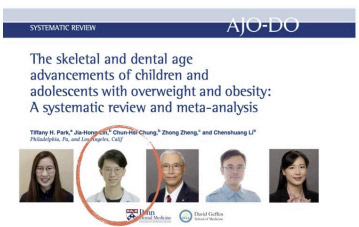

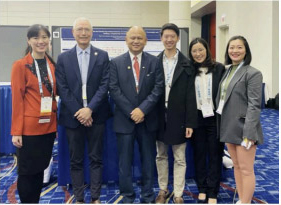 American Journal of Orthodontics Research Article of the Year
American Journal of Orthodontics Research Article of the Year
-
Should I get veneers or orthodontic treatment?
Veneers are thin porcelain layers used by cosmetic dentists to enhance the appearance of front teeth, improving color and shape for a whiter, more aesthetically pleasing smile. However, it’s important to note that veneers typically require the shaving of enamel , which can compromise tooth structure. Most importantly, veneers do not stay forever and may chip, requiring a replacement and even more tooth reduction. A veneer placed on a crooked tooth is also weaker and causes gum inflammation due to misalignment at the tooth-porcelain junction. Orthodontic treatment, while requiring a longer duration, offers a more comprehensive and lasting solution. By moving teeth into proper alignment, orthodontics promotes healthier positioning for improved function and aesthetics. If you’re unsatisfied with the color or shape of your teeth after treatment, you can always consider teeth whitening or composite resin for a more conservative restoration approach. You can definitely choose veneers but keep in mind they last longer and are less invasive only when your teeth are already in the right position. All in all, you should first make sure your teeth are straight before getting veneers or other restorations.
-
Should I get jaw surgery?
For patients with severe mismatch between their upper jaw and lower jaw, braces or aligners alone may not be able to fix their problems. Orthognathic surgery (Jaw surgery) often offers a better esthetic and functional result for adult patients with underbite (protruded lower jaw/chin), short chin, open bite, gummy smile, or other problems. Jaw surgery is usually performed during the middle phase of orthodontic treatment, and involves collaboration between the orthodontist and an oral or plastic surgeon. For patients who need jaw surgery, Dr. Lin works with the Oral Surgery department at National Taiwan University Hospital.
-
Should I be worried if I have TMJ problems or bruxism?
The temporomandibular joint (TMJ) serves as the connection between the lower jaw and the skull. Individuals with TMJ disorder (TMD) commonly report clicking sounds, discomfort when opening the jaw, and limitations in jaw movement. It is crucial to inform your orthodontist about any jaw-related issues before starting braces treatment. Bruxism, or nighttime grinding, often comes hand in hand with TMD. Getting a night guard may help with reducing damage to the teeth from grinding.
-
I snore a lot at night. Do I have obstructive sleep apnea?
Loud snoring can be a sign of obstructive sleep apnea (OSA), a condition where the tongue obstructs the airway during sleep, leading to breathing pauses and subsequent arousal due to low oxygen levels. OSA also causes elevated heart rate, daytime drowsiness, and trouble concentrating. While continuous positive airway pressure (CPAP) masks are the standard treatment for OSA, many patients find them uncomfortable. Orthodontists play a crucial role in OSA treatment by adjusting the jaw position to advance the tongue forward, preventing airway collapse during sleep. Jaw surgeries such as maxillomandibular advancement (MMA) or surgically assisted rapid palatal expansion (SARPE), areas of focus in Dr. Lin’s research at UPenn, are the most definitive ways to address skeletal issues related to OSA. These surgeries reposition the jaw to alleviate airway obstruction and improve breathing patterns during sleep.
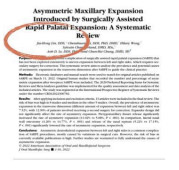


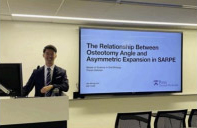 Journal of Oral & Maxillofacial Surgery
Journal of Oral & Maxillofacial Surgery
CONTACT US
-
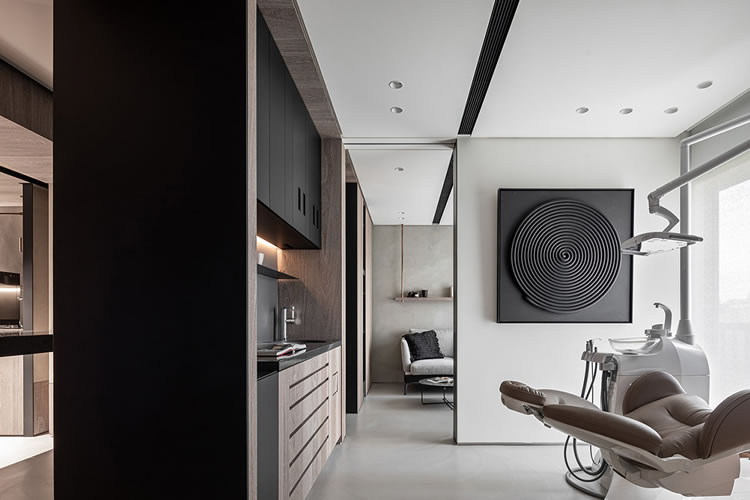
-

U JIAN DENTAL 大直裕見美 Add:No. 28, Ln. 265, Lequn 2nd Rd., Zhongshan Dist Phone:02-8502-2680 Clinic:Tue





-
